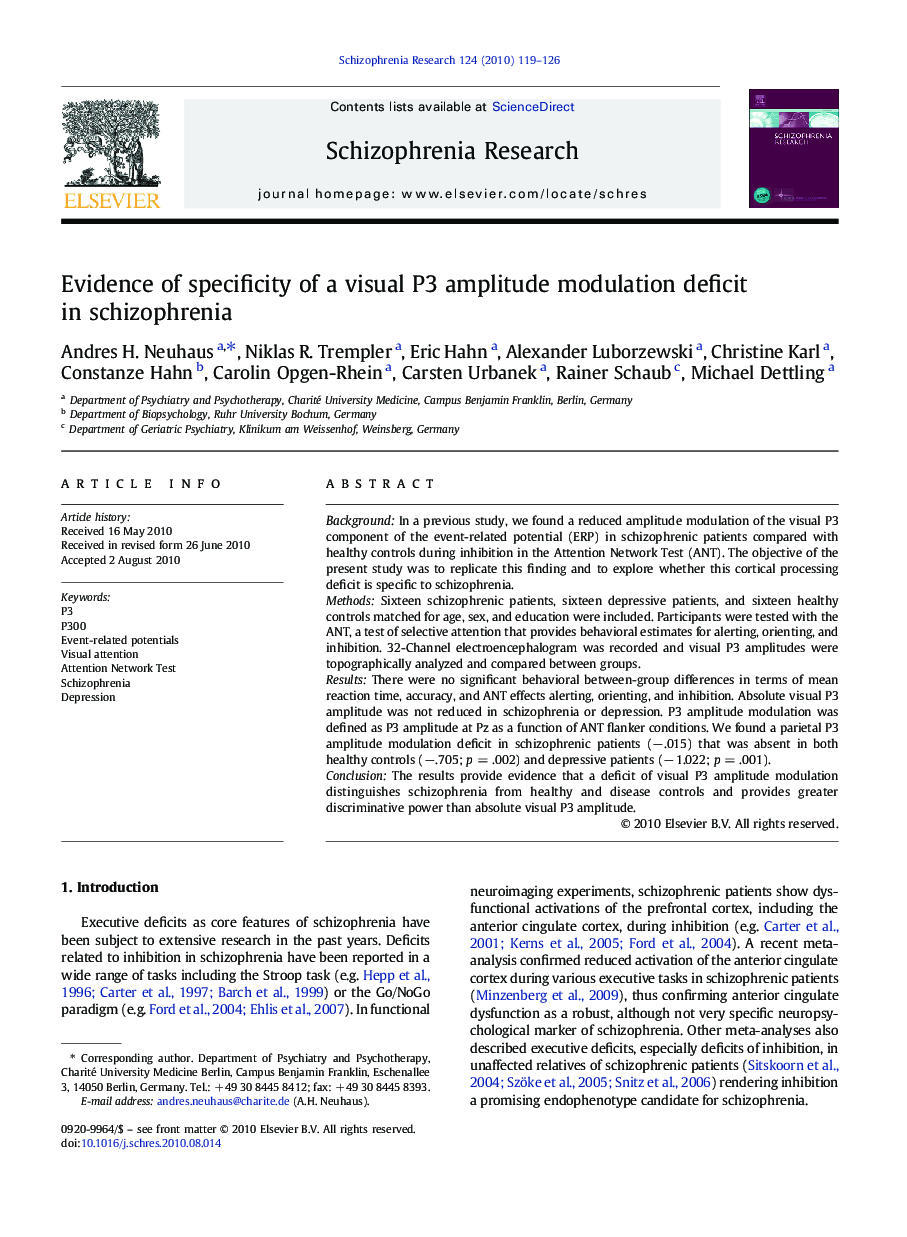| Article ID | Journal | Published Year | Pages | File Type |
|---|---|---|---|---|
| 338436 | Schizophrenia Research | 2010 | 8 Pages |
BackgroundIn a previous study, we found a reduced amplitude modulation of the visual P3 component of the event-related potential (ERP) in schizophrenic patients compared with healthy controls during inhibition in the Attention Network Test (ANT). The objective of the present study was to replicate this finding and to explore whether this cortical processing deficit is specific to schizophrenia.MethodsSixteen schizophrenic patients, sixteen depressive patients, and sixteen healthy controls matched for age, sex, and education were included. Participants were tested with the ANT, a test of selective attention that provides behavioral estimates for alerting, orienting, and inhibition. 32-Channel electroencephalogram was recorded and visual P3 amplitudes were topographically analyzed and compared between groups.ResultsThere were no significant behavioral between-group differences in terms of mean reaction time, accuracy, and ANT effects alerting, orienting, and inhibition. Absolute visual P3 amplitude was not reduced in schizophrenia or depression. P3 amplitude modulation was defined as P3 amplitude at Pz as a function of ANT flanker conditions. We found a parietal P3 amplitude modulation deficit in schizophrenic patients (−.015) that was absent in both healthy controls (−.705; p = .002) and depressive patients (− 1.022; p = .001).ConclusionThe results provide evidence that a deficit of visual P3 amplitude modulation distinguishes schizophrenia from healthy and disease controls and provides greater discriminative power than absolute visual P3 amplitude.
